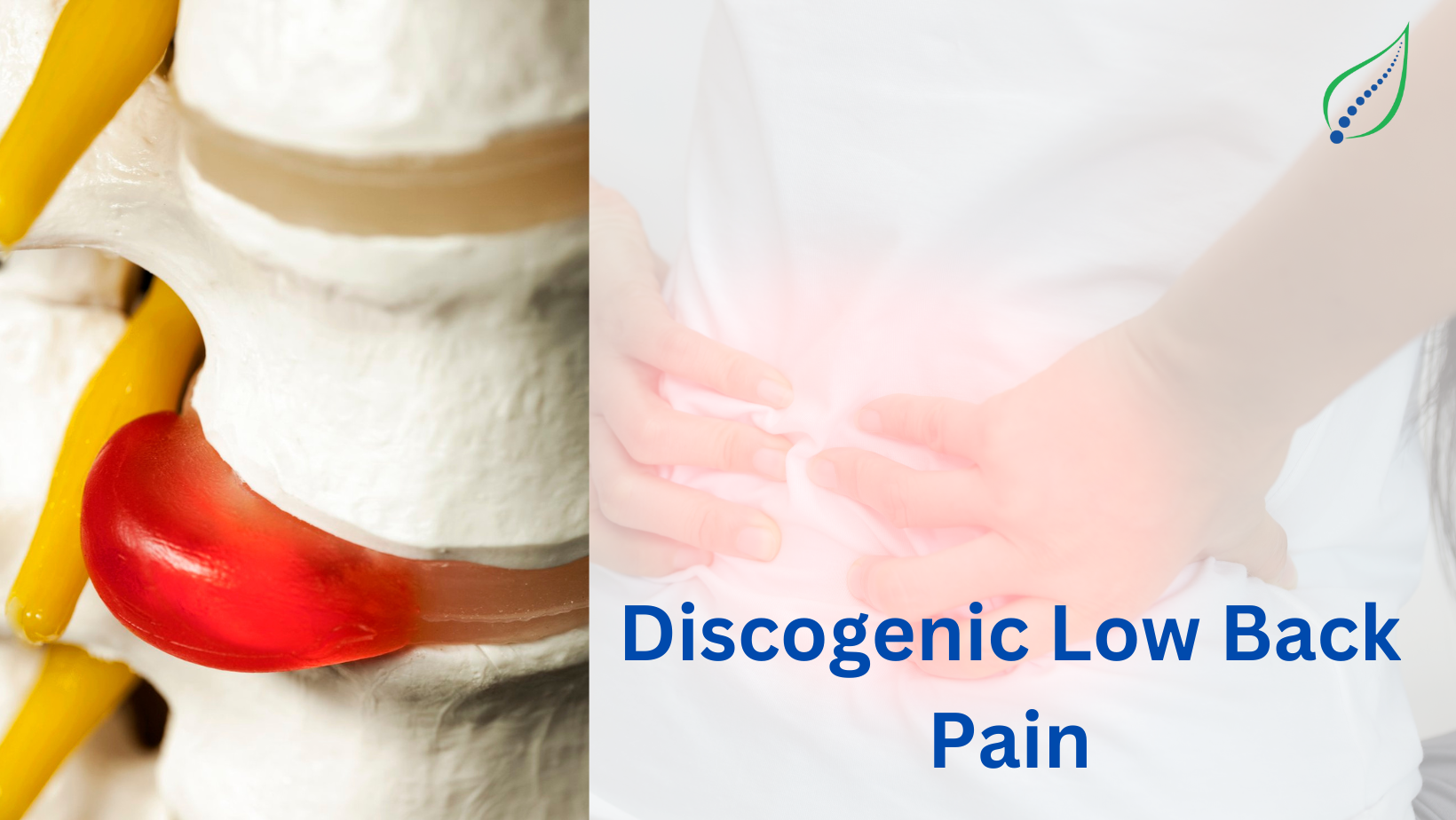Discogenic LBP
A complex, multifactorial, clinical condition characterized by low back pain with or without the concurrence of radicular lower limb symptoms is called as discogenic low back pain. The pain is exacerbated by activity, but may be present in certain positions, such as sitting.
Other painful symptoms that can develop as disc degeneration progresses include facet joint arthrosis, disc herniation, and irritation of the nerve roots, as well as hypertrophic alterations that culminate in spinal stenosis.
Causes:
A form of discogenic condition called Internal Disc Disruption (IDD) happens when disc brakes or cracks develop so that the nucleus and annulus can merge together. This may result in the release of a substance called proteoglycans, which can lead to discomfort and inflammation.
In order to have discogenic pain, genetics also plays an important role. The chemical composition of the discs may alter as a result of some genetic signals, which may also trigger metabolic alterations in the body. The disc can degenerate more quickly as a result.
Discogenic pain happens when the nerve receptors on the outer part of the annulus get inflamed. The nerve receptors are typically affected by disc inflammation or other disc disorders, which results in lower back discomfort.
Symptoms:
Activities that could raise the pressure in the intervertebral disc and cause the pain to aggravate are frequently leads to discogenic pain. The following actions might make the condition worse:
Squatting, leaning forward, coughing while sneezing (you may find relief when you lay down).
Discomfort at the back of your thigh or buttocks, particularly while seated.
Symptoms includes : Low back pain with or without radiation to one or both lower limbs, Tingling and numbness in lower limbs, low back stiffness.
Treatment:
In some cases, discogenic pain may heal on its own, or the pain may also be persistent. Conservative treatment is often the first option to manage pain. A patient may
- Anti-inflammatory drugs
- Ice or heat therapy
- Physical therapy- Physical therapy sessions may be centred on back exercises or spinal traction.
- Postural changes
Some types of injectable therapy may also help reduce pain. These include:
- Epidural Injections
- Facet Injections

_1747226427_1751827070.png)
_1744793045_1751827442.png)
_1743751136_1751830603.png)
